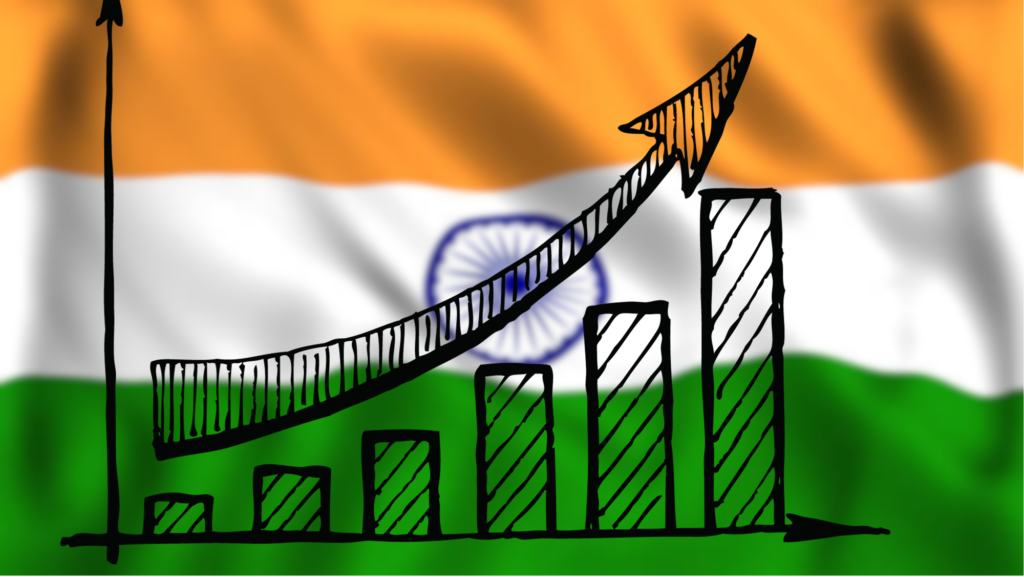india Revenue Growth Forecast

India
India’s revenue growth forecast for the coming years presents a multifaceted landscape, influenced by a variety of factors including domestic consumption, government policies, and global economic conditions. As the world’s fifth-largest economy, India has shown resilience in the face of economic challenges, but it also faces significant headwinds that could impact its growth trajectory.
Current Economic Landscape
India’s economy has demonstrated remarkable growth, with a reported GDP increase of 8.15% year-over-year for the fiscal year ending 2024. This growth has outperformed market expectations and marks a continuation of a trend where India’s economy has consistently exceeded growth forecasts for three consecutive years, averaging 8.3% annual growth during this period. The primary drivers of this growth have been strong domestic demand, ongoing government reforms, and increased capital expenditure.However, recent reports indicate that corporate revenue growth has slowed significantly. In the June quarter of 2024, India Inc. recorded its lowest revenue growth in nearly four years, ranging between 5% to 7%, down from 7% in the previous quarter. This decline is attributed to several factors including seasonal impacts on agriculture-linked sectors and the effects of general elections on construction activities.
Sectoral Contributions to Growth
Agriculture
Agriculture remains a cornerstone of the Indian economy, employing over 50% of the workforce and contributing approximately 20.2% to GDP. Despite its declining share in overall economic output due to diversification into other sectors, agriculture continues to play a vital role in sustaining rural livelihoods and driving consumption. The sector’s performance is closely tied to monsoon patterns, which can significantly affect crop yields and subsequently rural income levels.
Manufacturing and Industry
The manufacturing sector has shown signs of recovery with an increase in industrial production. The index of industrial production indicates sustained momentum, particularly in sectors like consumer goods and automobiles. Government initiatives aimed at boosting manufacturing capabilities are expected to enhance productivity further. However, challenges such as pricing pressures and competition from imports remain significant hurdles.
E-commerce and Digital Economy
India’s e-commerce sector is projected to reach $325 billion by 2030, driven by increasing internet penetration and changing consumer behaviors. The rise of digital platforms has transformed retail landscapes, with significant investments from major players like Flipkart and Google contributing to this growth. The e-commerce boom is expected to create new revenue streams and enhance overall economic activity.
Future Growth Projections
Looking ahead, Deloitte projects India’s GDP growth to be between 7.0% and 7.2% for fiscal year 2024-2025, with a slight moderation expected in the following year 4. This optimistic outlook is based on anticipated improvements in capital flows and private investment as global economic conditions stabilize post-elections in major economies like the United States.The United Nations has also revised upwards India’s growth projections for 2024 to approximately 6.9%, driven primarily by strong public investment and resilient private consumption 1. Meanwhile, the World Bank forecasts similar robust growth at around 7% for FY24/25 2.
Key Drivers for Future Growth
- Government Policy Reforms: Continued reforms aimed at improving ease of doing business will likely unlock new opportunities for investment across various sectors.
- Infrastructure Development: Increased government spending on infrastructure projects is expected to stimulate economic activity and create jobs.
- Global Economic Recovery: A synchronized recovery in global markets could enhance India’s export potential and attract foreign direct investment (FDI).
- Rural Demand: As rural incomes improve due to favorable agricultural conditions and government support through minimum selling prices (MSPs), consumer spending is likely to see an uptick.
Challenges Ahead
Despite these positive indicators, several challenges loom on the horizon:
- Inflationary Pressures: Rising oil prices and food costs could undermine consumer purchasing power if inflation remains unchecked.
- Geopolitical Uncertainties: Ongoing geopolitical tensions may affect trade dynamics and investor confidence.
- Corporate Performance Variability: As seen in recent quarters, corporate revenue growth can be volatile due to external factors such as seasonal changes or political events.
Conclusion
India’s revenue growth forecast reflects a blend of optimism tempered by caution. While the country is poised for robust growth driven by domestic consumption and strategic reforms, external factors such as global economic conditions and inflation will play crucial roles in shaping its economic landscape. Policymakers must navigate these complexities carefully to sustain momentum while addressing underlying vulnerabilities within various sectors of the economy.As India continues its journey towards becoming a global economic powerhouse, the focus will need to remain on inclusive growth that benefits all segments of society. For further insights into India’s economic prospects, you can explore additional resources from The Hindu, World Bank, IBEF, Deloitte, and Economic Times.




